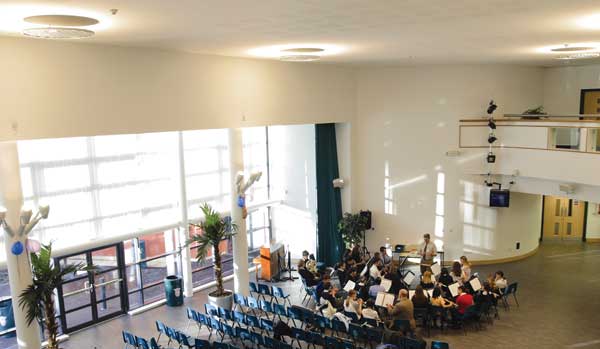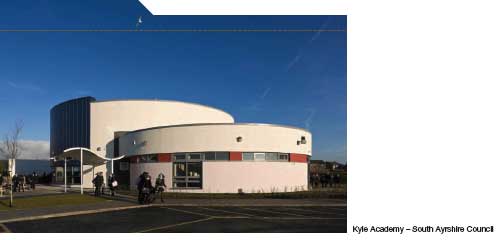Building better schools: investing in Scotland's future
The school estate strategy is relevant to all parts of the learning environment: the buildings and spaces, the grounds, the fixtures, facilities and furniture.
1 INTRODUCTION

By any reckoning the scale of the school estate represents a huge public investment in a national and community asset. The challenge which this Strategy addresses is how best that investment and asset can enhance the quality of life and outcomes for the people of Scotland. Jointly developed by local and Scottish Government, it sets out a shared vision and aspirations for the school estate, the guiding principles and objectives which will be key to their achievement and a comprehensive programme of supporting work, some new and some building on work and initiatives already underway. A national strategic direction - a 'route map' - is spelled out, with clear signals as to the intended direction of travel and destination. The Strategy is expressed in flexible terms - so that it is relevant to every local authority, school and community. It recognises that authorities should have scope to take different routes towards implementation, according to their different starting points, circumstances and local priorities.
The School Estate Strategy both builds on and supersedes the one published in 2003 by the then Scottish Executive and COSLA 1 . There was insufficient detailed information about the school estate at the time to enable the 2003 Strategy to set out clear objectives or targets beyond the generally aspirational, or to say in any detail what needed to be done or how it would be achieved. The 2009 Strategy remedies that. The information base now established through the collection of the Core Facts allows the vision and aspirations for the future school estate to be underpinned by measurable targets and clear principles, objectives and a programme of work. A significant difference between the two strategies is that the previous one was set in a policy context that focused particularly on the number of schools. The policy focus now, in the context of Curriculum for Excellence, is very much more on the beneficiaries of high quality school buildings - the pupils, teachers and local communities.
The pace of change and range of new challenges mean that any strategy has to evolve. Much has been achieved over the six years since 2003, but that in itself has also served to highlight what still requires to be done.
The view that it was time to reflect on progress thus far, to learn lessons from recent experience and to review how the school estate can better contribute in the widest sense to the richness of Scottish life was reinforced by Audit Scotland's March 2008 report Improving the School Estate 2 . This made clear that significant progress had been made in improving the estate and overtaking the legacy of pre-devolution underinvestment in schools (when expenditure on maintenance, repair and replacement failed to keep pace with the rate of deterioration), but that much more still needed to be done.
This Strategy is therefore a direct response to the Audit Scotland report, all of whose 19 recommendations have already been jointly accepted by COSLA and the Scottish Government. They are set out in detail in Annex D. In May 2009 Audit Scotland published another report entitled Asset Management in Local Government 3 . This is directly relevant to and reinforces a number of the recommendations in their earlier report - such as those relating to management planning, the measurement of 'suitability', the focus on whole life cycle costings, sustainability and consultation.
There were two other key 'drivers' behind the preparation of this Strategy. The first was an intention that it should be relevant to all schools, not just those which are being rebuilt or refurbished. The second was a determination that attention should switch away from inputs or 'numbers of schools' - which are merely the means to the end - onto impacts and outcomes. The Strategy therefore focuses ultimately on the beneficiaries - the proportion and number of pupils (and adult and community learners) whose experiences, attainment and achievements are enhanced as a result of learning in good condition and suitable environments; and what that means in terms of sustained engagement with learning, both during the school years and beyond. These are the real prizes.
This Strategy has been prepared by the School Estate Strategy Working Group. The Group was jointly chaired by the Scottish Government and COSLA and members included representatives of the Society of Local Authority Chief Executives, the Association of Directors of Education in Scotland and the Scottish Futures Trust. (Full details are set out at Annex A.)

There is a problem
Thanks for your feedback